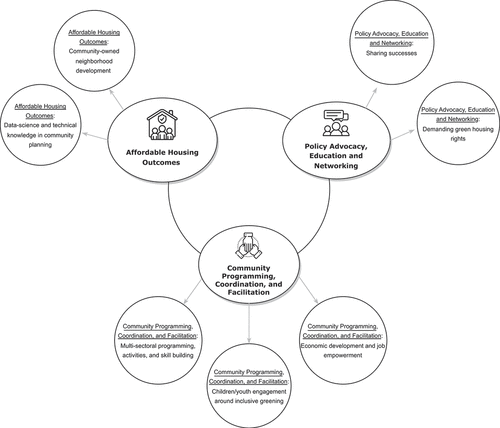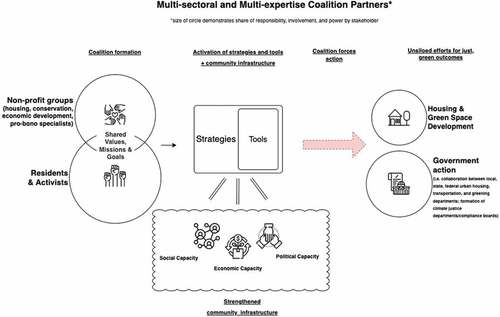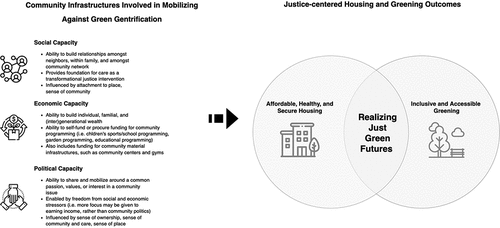Figures & data
Table 1. Overview of activist strategies and tools.
Figure 1. Three strategies and associated tools (7) utilized by coalitions of community residents, neighborhood alliances, nonprofit groups, and civic leaders that support strengthened community infrastructures in achieving just housing and greening outcomes.

Figure 2. Multi-sectoral and multi-expertise coalition partners for equitable housing and inclusive urban green amenities. The size of the circles represents which stakeholder groups we found to play a more central role in building urban green justice.

Figure 3. Three types of community capacities that make up community infrastructure and resulting vision of just green urban futures.

Figure 4. Community infrastructure and its three capacity components provide the social, functional, emotional and spatial bonds necessary for physical infrastructures (e.g., community-developed and maintained affordable housing, community health centers, neighborhood sports fields, community food co-ops, etc.) to provide reinforced justice-centered immaterial green such as attachment to place, sense of community care, and sense of community ownership.

Data availability statement
The data that support the findings of this study are available in the supplementary materials of this article and on request from the corresponding author. All data are not publicly available due to information that could compromise the privacy of research participants.
